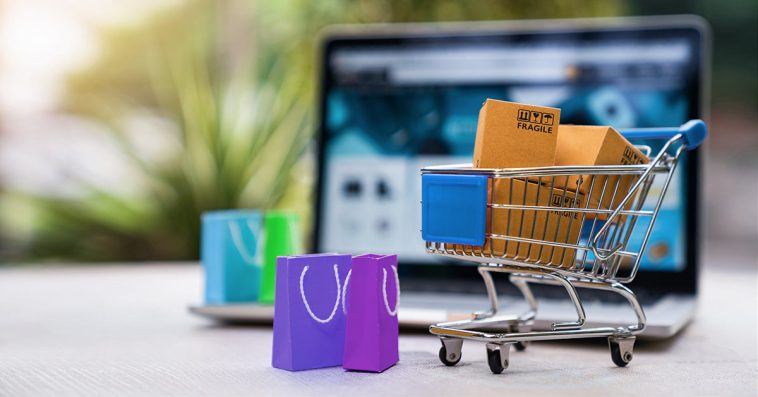Introduction.
When starting an online business, two popular paths often come up for beginners: print-on-demand (POD) and dropshipping.
Both have their own set of advantages and challenges and choosing the right one can be a game-changer for your venture.
Print-on-demand allows you to design and sell custom products like t-shirts, mugs, and phone cases without holding any inventory.
When a customer places an order, the product is printed and shipped by a third-party provider.
This model minimizes upfront costs and risk because you only pay for products after they’ve been sold.
According to Statista, the global print-on-demand market was valued at approximately $4.9 billion in 2023 and is expected to grow at a CAGR of 28% from 2024 to 2030. This rapid growth underscores the increasing popularity and potential profitability of POD.
On the other hand, dropshipping involves selling products that are stored and shipped by a supplier.
You handle the sales and customer service while the supplier manages inventory and fulfilment.
This model also eliminates the need for upfront inventory purchases, but it can come with challenges related to supplier reliability and product quality control.
A report by Grand View Research estimates the global dropshipping market size to reach $557.9 billion by 2025, growing at a CAGR of 28.8% from 2024 to 2025. This growth highlights the scalability and broad appeal of dropshipping.
Both options have their merits, but deciding which to start with depends on your business goals, interests, and resources.
In this post, I’ll break down the key differences, benefits, and potential pitfalls of each model to help you make an informed decision and set yourself up for success in the world of e-commerce.
Should I Start With Print-on-demand Or Dropshipping as a Beginner?
Starting an online business can be an exciting venture, but choosing the right model can be overwhelming, especially if you’re new to the game.
Two popular options for beginners are print-on-demand (POD) and dropshipping.
Both have their unique advantages and challenges and understanding these can help you make an informed decision.
Print-on-Demand
Print-on-demand is a business model where products are customized and printed only after a customer places an order.
This means you don’t hold any inventory; instead, products are created and shipped on demand.
POD services typically cover everything from printing to shipping, allowing you to focus on design and marketing.
Pros of Print-on-Demand
- Low Initial Investment: With POD, you only pay for products after you’ve made sales. This eliminates the need for a large upfront investment in inventory.
- No Inventory Management: Since products are made and shipped as orders come in, you don’t need to worry about managing or storing inventory.
- Customization: You can offer a wide range of unique, custom designs without needing to invest in equipment or handle production.
- Ease of Use: Platforms like Printful or Teespring make it straightforward to set up an online store and integrate it with your website.
Cons of Print-on-Demand
- Lower Margins: The cost per unit for POD can be higher compared to bulk purchasing, which can lead to lower profit margins.
- Limited Control Over Production: You rely on third-party providers for production quality and shipping times, which can affect customer satisfaction.
- Competition: POD is popular, so standing out can be challenging. You’ll need to invest in marketing and branding to make your products noticed.
Dropshipping
Dropshipping is a retail fulfilment method where you don’t keep products in stock.
Instead, when you make a sale, you purchase the item from a third party (usually a wholesaler or manufacturer) and have it shipped directly to the customer.
Pros of Dropshipping
- Low Startup Costs: Similar to POD, you don’t need to invest in inventory. You only pay for products after you’ve made a sale.
- Wide Product Range: You can offer a broad range of products without managing physical stock, which allows for a diverse catalogue.
- Scalability: With dropshipping, scaling up your business is more straightforward since you don’t need to handle the logistics of stocking and shipping products.
- Flexibility: You can run your business from anywhere, as long as you have an internet connection.
Cons of Dropshipping
- Lower Profit Margins: Like POD, dropshipping can have lower profit margins due to the higher cost per unit from suppliers.
- Less Control Over Inventory and Quality: You depend on third-party suppliers for product quality and availability, which can impact your customer service.
- Shipping Complexity: If you source products from multiple suppliers, managing shipping can become complicated, leading to potential delays or higher costs.
Which Should You Choose?
When deciding between print-on-demand and dropshipping, consider the following factors:
- Product Type: If you’re passionate about custom designs and unique products, POD might be the better fit. If you prefer offering a wide range of products without design work, dropshipping could be more suitable.
- Profit Margins: Both models involve lower margins compared to traditional retail, but dropshipping can sometimes offer more flexibility in product pricing.
- Control and Quality: If you want more control over the design and branding of your products, POD is advantageous. For a wider product range and potentially faster scaling, dropshipping might be better.
- Marketing and Branding: Regardless of your choice, you’ll need to invest in marketing and build a brand to stand out. Both models require effective promotion to attract and retain customers.
I wrote a comprehensive guide on how to grow your business across various social media platforms. Check out the link below to get started.
- (Facebook Marketing) How To Grow Your Business On Facebook
- (Twitter Marketing) How To Grow Your Business On Twitter
- (TikTok Marketing) How To Grow Your Business On TikTok
- How To Grow Your Email List And Make Money
Conclusion.
So, which should you start with, print-on-demand or dropshipping? Ultimately, the best choice for you will depend on your individual goals, budget, and level of comfort with risk.
If you’re a beginner looking for a low-risk way to dip your toes into the e-commerce world, dropshipping might be a good option.
It requires less upfront investment and allows you to test products and market demand without the hassle of inventory management.
However, be prepared for lower profit margins and competition from other dropshippers.
If you’re more comfortable with taking on a bit more risk and want to build a unique brand, print-on-demand could be the right choice for you.
It gives you more control over your products and allows you to create one-of-a-kind designs. However, you’ll need to invest more upfront in inventory and marketing.
No matter which path you choose, remember that success in e-commerce requires hard work, dedication, and a willingness to learn.
What are your thoughts on print-on-demand vs. dropshipping? Which one do you think would be a better fit for you?




GIPHY App Key not set. Please check settings